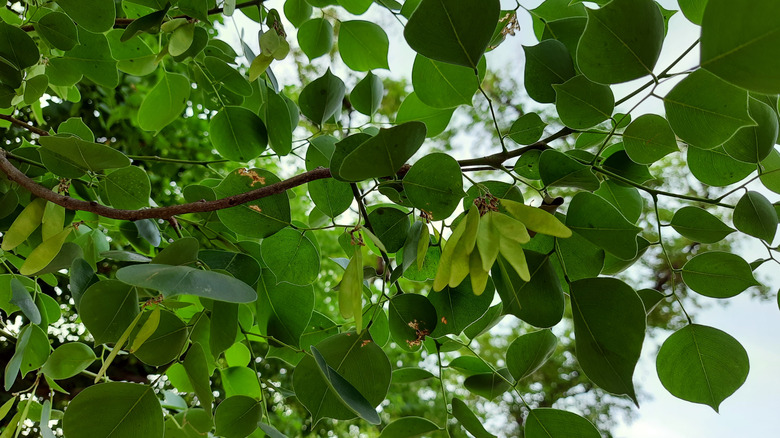Sitting in your yard under a large, shaded tree to enjoy a hot summer day is one of the many perks of having trees around your home. Trees on our properties hold many benefits, from increasing property value with their gorgeous leaves to holding tire swings for all the littles in our lives. However, not all trees will be beneficial to our homes in the long run. Sometimes, large branches hang too close to our roofs, and nearby trees increase the risk of detrimental lightning strikes, or as is the case with the Sissoo tree, it has invasive roots.
While Sissoo trees are loved for the blissful shade their large size allows in the heat of summer months, vibrant green leaves, and fast-growing qualities, their roots pose many issues for homeowners. Sissoo trees need plenty of room to grow due to their roots traveling up to 100 feet away from their trunk at times, which can damage property in many ways. New Heights Tree Service has even reported a customer finding Sissoo tree roots infiltrating their home by snaking into their kitchen and around their pipes, damaging their plumbing. So, how exactly do you identify these invasive trees, and if you happen to have one near your home, what steps should you take to eliminate the potential destruction?
Identifying a Sissoo Tree

Also referred to as the Indian Rosewood tree, the Dalbergia Sissoo is from the Fabaceae family and is native to tropical regions of India. Within the United States, these trees are often found in similar climates like Florida and Arizona. Sissoo trees may cause potential damage to our homes, but they are still beloved by many for their pointed, glossy leaves, spring and summer flowers, and drought tolerance. Oftentimes, when these trees are planted near houses, homeowners don’t know the complications that can arise from Sissoo trees not having enough room to grow freely.
Reaching up to 50 feet tall and averaging a reach of 50 to 100 feet with its roots, these trees grow rapidly and become an issue before we have time to recognize them fully. In just eight years, a Sissoo tree can reach 18 feet. Once its roots begin to travel and spread from the base, anything in its path risks damage, including patios, pools, driveways, sidewalks, storage sheds, and, on some occasions, much more drastic destruction to water lines and housing foundations. While realtors often recognize a Sissoo tree before selling a home and are likely to remove it, some do get overlooked. And, even if it doesn’t pose any issues right now, that may not always be the case. If you find you have a Sissoo tree on your property, you’ll want to know precisely how to handle it and avoid any potential impairment.
How to prevent Sissoo Tree damage
When assessing how to prevent a Sissoo tree from damaging your property, the most straightforward answer is to remove the tree. Unfortunately, removing a Sissoo is not as simple as chopping it down and leaving a stump in its wake. The Indian Rosewood’s roots produce seedpods that can sprout and grow new trees, leaving you with much more work to do outside of cutting down the main trunk. You’ll also need to ensure all seedpods and roots are eliminated. The Sissoo stump will need holes drilled into the top outer ring and a herbicide infused into them to kill off the roots. In certain locations, the chemicals needed won’t be available in stores, and professional services will be required.
The process of completely removing a Sissoo tree and eliminating the risks it poses can take months. Outright removing the roots from the ground after the tree has been chopped down is possible, but you’ll need to hire professional help and be willing to tear up your property. However, if you find value in a Sissoo or don’t want the hassle of the excavation, root barriers are an effective way to contain the tree without harming it. Chemical and mechanical root barriers are an option, with chemical barriers stopping the growth of roots past specific points and mechanical ones providing a physical barrier in the soil that blocks the root’s path. If choosing a chemical barrier option, remember that these are harmful toxins to humans.